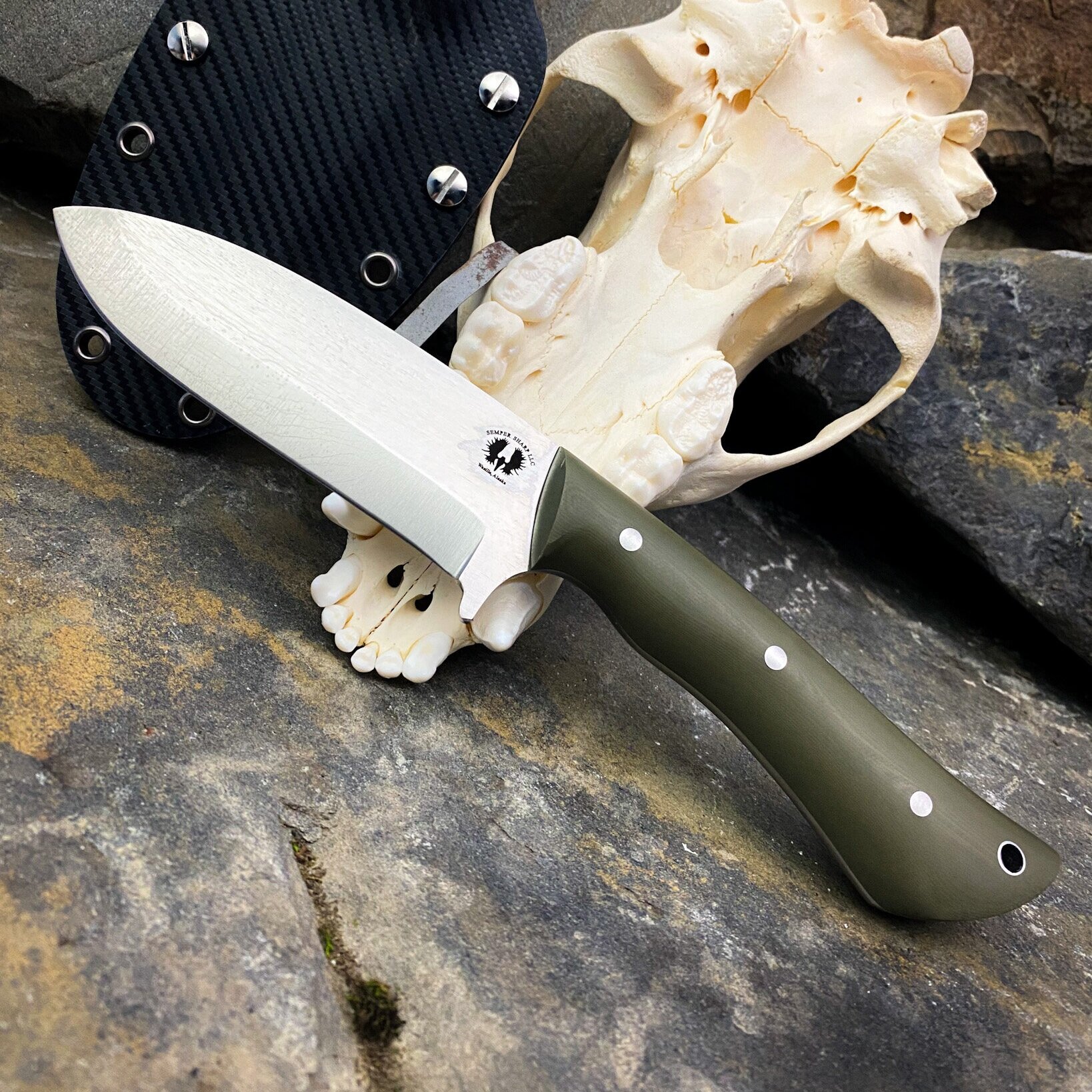Handle Materials
We use a wide variety of materials in our handle making process. Our goal in writing this section is to aid our clients in picking out handle materials that best fit their function and style. We also aim to list different customization options and how they are priced.
Wooden Handles- Wood is the most common request we get for handles. We are constantly adding to our selection of woods we stock for handles. We have established relationships with some of the best exotic wood brokers in the world, in an effort to stock the best options for our clients.
We professionally stabilize all wood we use on handles, minus a few that are too dense to stabilize (Ironwood, Cocobolo, & Kingwood). The stabilization process is a slow methodical process that impregnates natural materials (wood, bone, fossils) with a resin. The resin almost plasticizes the natural materials filling voids with a clear resin. Stabilizing SLOWS natural materials from taking on moisture and swelling. It also helps natural materials from splitting when exposed to sudden pressure. Stabilized handles still require care, but are a very solid option for handles.
Wood Burl and Live Edge Resin Handle- These are by far our most popular handles, and we totally understand why! Burls have beautiful figuring and resin is a way to add color and depth to handles. Over the past three years, we have learned a lot about working with epoxy resin and burls. We have found a few different species of wood that work best for this type of application.
· Buckeye Burl
· Maple Burl
· Hawaiian Koa
As we mentioned above, we have three US-based lumber providers for our Buckeye, Maple, and Hawaiian Koa. We source all of our wood from family-owned mills and suppliers. We mention this because it is important to us. We also want you to know the money you invest in a knife is spent helping multiple family-owned businesses across the globe.
Composite handles- Composite handles come in a wide variety of options. They are made up of two different parts, these are fabric and epoxy. The fabric is usually a cloth-like material that gives strength. The epoxy is the material that holds everything and adds rigidity together. We have listed a few that we like to work with, along with brief descriptions below.
· G-10- G-10 is a high pressure fiberglass laminate material. The fabric in G-10 is small glass fibers, with a clear epoxy resin. If you are looking for strength, durability, and DO NOT take care of nice things…. G-10 is the material for you! This stuff stands up to moisture and acids. We list it first in this section because we find it to be the best, low cost option for a knife handle. G-10 comes in a wide variety of colors as well.
· Carbon Fiber- Carbon fiber has all of the positive aspects of G-10 and then some. It has a carbon cloth for its fabric which when bound with the epoxy polymer becomes a carbon fiber reinforced plastic. Pound for pound it is one of the strongest materials in the world. Carbon fiber handles make an excellent option for a heavily used knife. Carbon fiber works well for bolsters too! Generally, you can expect a price increase of $75 for full carbon fiber handles.
· Micarta- Micarta is similar to G-10 and Carbon Fiber. Micarta was invented in the early 1900s. the fabric used for micarta is wide-ranging. Where G-10 uses glass fiber and carbon fiber uses carbon cloth, micarta uses linen, canvas, paper, and other cloths. Micarta is another solid option for handles. It too works well as solid handles, or for bolsters. We have a solid relationship with a custom micarta maker in Idaho. He blends materials and fabrics that are beautifully patterned together. This custom micarta is an excellent way to add color to a handle. You can expect a $40 increase for custom micarta handles, like what’s pictured below.
Natural Materials Other Than Wood
Another form of materials we like to select from are natural materials like antler, bone, teeth, and fossils of/from animals. These materials are full of natural character, they are usually very hard and dense, they also tend to not expand and contract like wood can (if not properly cared for of course!).
Antler and bone handles come at no extra cost. We have a healthy supply/collection of antlers available.
Natural materials can get expensive if you choose a very rare material like mammoth tusk or molar. Mammoth requires a lot of care in stabilization before going onto a handle. We have built strong relationships with a local Alaskans who supply the world with mammoth. 90% of the mammoth material we use for handles are dug from Alaskan soil. We feel fortunate to have the ability to work with such an incredibly rare, rich in character, and ancient fossils like mammoth.













